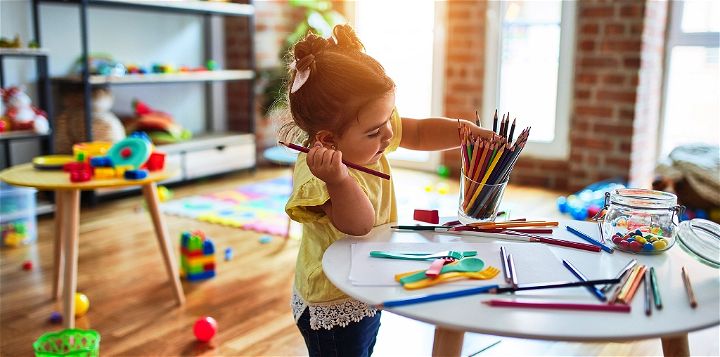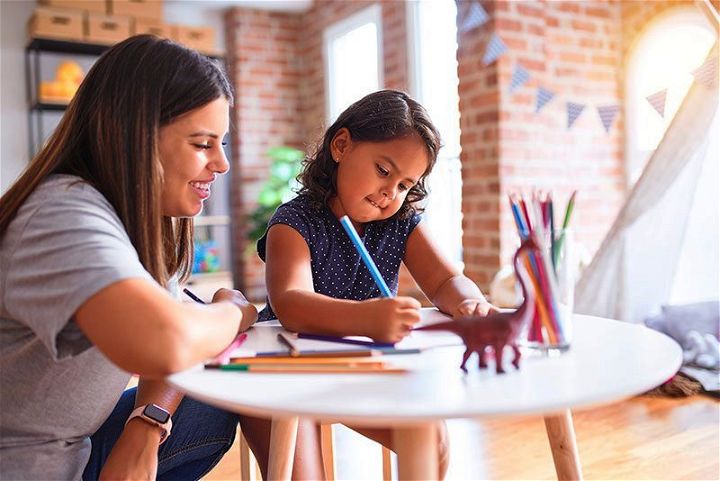According to many experts, the preschool years are the prime innovative years. Thus, creative thinking is a critical skill a minor must have to prepare for future duties. As per researchers, encouraging creativity in youngsters aids in their world understanding. It also aids in developing their imagination, flexibility, and problem-solving abilities. But there is zero consensus on the best way to encourage creativity in preschoolers. This case remains a fact even though several approaches have been put out. This research study aims to analyze various methods of fostering creativity in youngsters. We’ll select appropriate strategies for each age group from 3 to 6 years old. As a result, our research thoroughly analyzes how to foster creativity. It’ll help to design an appropriate program for nurturing creativity in preschool children.

Completing Assignments Online
Online assignment help is a viable way to boost the kids’ innovative thinking prowess. Assignments help to foster critical thinking, problem-solving, and structured imaginative thinking among individuals. College students who research pedagogical issues conduct lots of research and create many of these tasks. The internet has several writing services you can pay to handle your assignments as needed. Children improve their creativity and cultivate novel concepts by completing the assignments made with the help of services. Further, it helps them bolster their self-assurance in their competencies. These tasks offer a chance for subteens to engage in visionary exploration. Caregivers also aid in fostering these abilities.
Online assignments allow parents to assist their minors more conveniently. As covered above, many platforms exist where someone can do your assignment. Thus, you can pay for assignment help services if you’re occupied with other issues. This approach gives your offspring an optimal learning encounter with less hassle.
Encouraging Creative Play & Free Time
Minors benefit immensely from more opportunities for unstructured play and imaginative exploration. These approaches motivate kids to experiment with a variety of materials. They get access to several pursuits without worrying about meeting specific standards. Children’s creativity and problem-solving abilities flourish when they have unstructured time. They use this chance to explore their imaginations via activities like painting. Also, when kindergarteners engage in imaginative play activities, it helps them develop a growth attitude. Ultimately, this will serve them well in school and the workplace.
Using Tech Learning Tools
Apps, games, and other technological tools promote toddlers’ visionary development. They do this by providing them with fun opportunities to try out new strategies. Technology-based learning tools help to boost student engagement. This boost helps students to become more self-motivated and academically prepared. Also, mobile games are beneficial to kids’ brain growth. But consider those creative hobbies that test their problem-solving mettle. Go for those that inspire them to think beyond the box. As a result, teaching youngsters using tech tools is crucial. It’s a fun and new approach to developing their thinking abilities.
Controlling Screen Time

Lessening minors’ exposure to screens allows them more time for free play. This approach gives them enough time for discovery and socialization. Thus, this contributes to developing their imaginations and creativity. Also, there is evidence that kids’ academic performance suffers due to lots of screen time. Encouraging kindergarteners to participate in other creative pursuits like art is crucial. This step will positively impact their mental and emotional intelligence growth. Keeping an eye on what youngsters browse on the internet is crucial. Other than this, it’s pivotal to decide on educational programming. This step encourages their development as learners and artists.
Encouraging Open-Ended Conversations
Tiddlers’ imaginations benefit greatly from adults’ encouragement of free-flowing speech. It is vital to give minors a safe space to express themselves and bounce ideas off one another. It’s a great way to encourage their imagination. Avoid asking minors confined questions designed to elicit simple yes or no answers. Instead, starting conversations that stimulate critical and innovative thinking is crucial. Parents who engage their children in thought-provoking conversations foster kids creativity. These discussions may focus on a wide range of topics. Also, parents should actively listen to children’s perspectives. Parents encourage their kids’ imagination and problem-solving skills by asking open-ended questions. As a result, avoid giving them ready solutions as much as possible.
Why is Creative Thinking Important for Preschoolers?

Inventive thinking is crucial for toddlers as it supports their cognitive development. It also allows them to explore their thoughts and feelings. It allows them to do this while developing new and original ideas. According to research, creative thinking enables youngsters to develop problem-solving skills. It lets kindergarteners think outside the box and approach tasks uniquely. Besides that, innovative thinking promotes a child’s ability to express themselves. This skill is essential for communication and language development. Encouraging creativity in youngsters helps them become well-rounded learners. It further prepares them for future academic success.
Conclusion
Encouraging inventive thinking skills in preschoolers is crucial. It promotes their cognitive development and future academic success. While there is no data on the best approach, various methods have been proven effective. These include online assignments, unstructured play, and technology-based learning tools. Others include controlling screen time and encouraging open-ended conversations. Innovative thinking promotes a child’s ability to express themselves and approach tasks uniquely. It helps them become well-rounded learners. As a result, it prepares them for future academic and personal success. In general, we must provide opportunities for youngsters to explore their imaginations. We must allow them to experiment with different approaches to problem-solving. Through this, we support their creativity and help them achieve their full potential.




